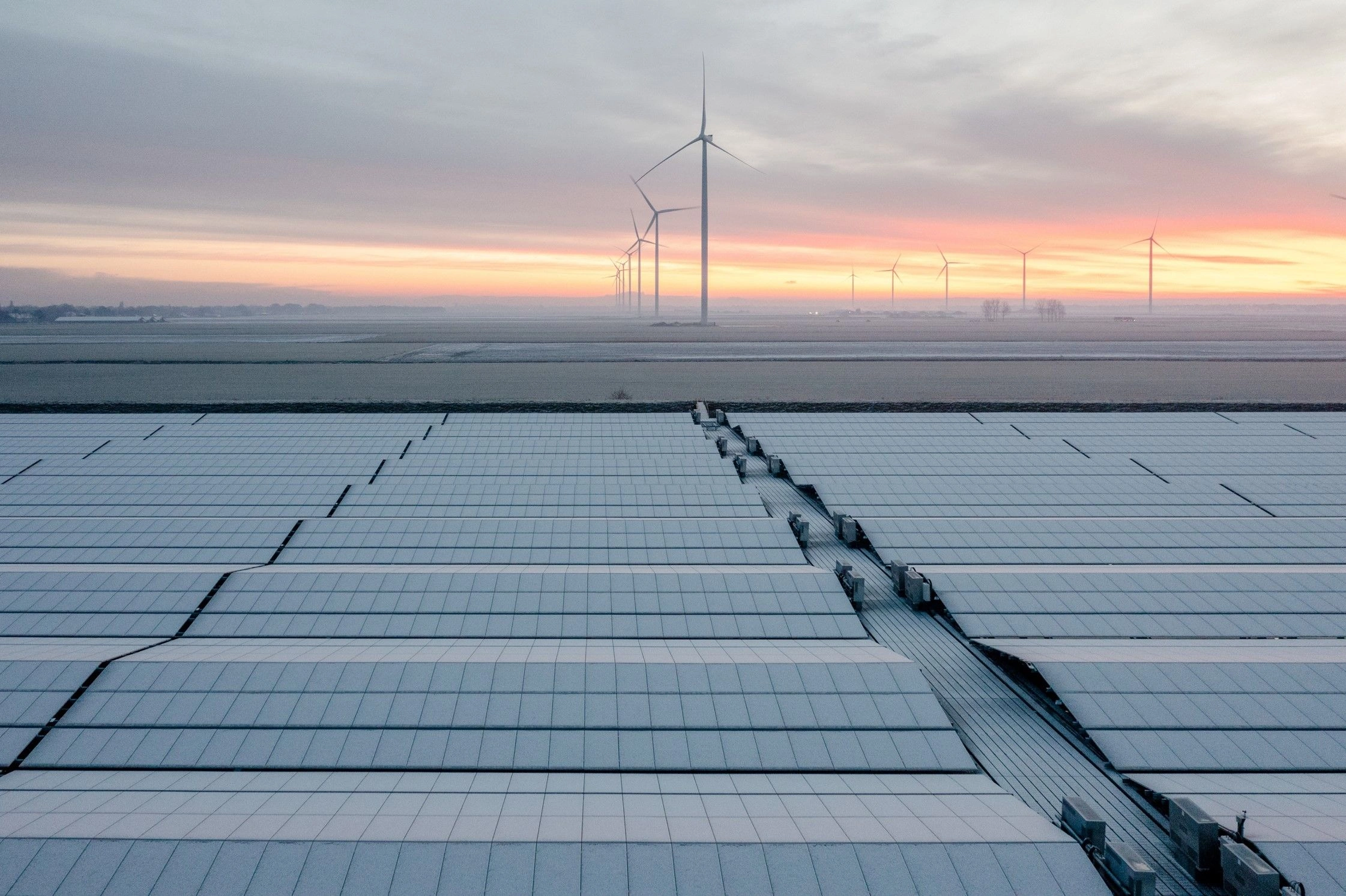
On November 20, 2023, Directive (EU) 2023/2413 came into force, amending Directive (EU) 2018/2001, Regulation (EU) 2018/1999 and Directive 98/70/EC as regards the promotion of energy from renewable sources, and repealing Council Directive (EU) 2015/652. Its adoption aligns with one of the main goals of the EU's energy policy by 2030 - decarbonizing the economy and transitioning to a low-carbon economy.
*
The Directive ensures terminological and regulatory alignment with other relevant previosly adopted European legislative acts [e.g., Regulation (EU) 2023/1542; Regulation (EU) 2019/943; Regulation (EU) 2023/1804; Regulation (EC) 1893/2006; Directive (EU) 2019/944] and introduces concepts and a unified legal framework to support measures at the EU level, not only for producers but also for prosumers and domestic and industrial/public consumers.
The Directive goes beyond renewable energy producion, also encompassing regulations on energy storage at domestic and producer levels, promoting the consumption of renewable energy in industry, residential, and public buildings, including for heating and cooling, and in transportation.
*
The provisions of the directive must generally be transposed within 18 months, with shorter deadlines – July 2024 – for certain provisions concerning authorization procedures. As of the date of this article, we are approximately halfway through this general term.
Below are some of the changes/additions/new aspects introduced by Directive (EU) 2023/2413, outlining medium and long-term perspectives in the EU and Romania, and the timeline for member states' obligations in above-mentioned directions:
1. INCREASE OF UNUIN’S GENERAL TARGET. NATIONAL MAPPING OBLIGATION
The target share of energy from renewable sources in the Union's final energy consumption for 2030 has been increased from 32% to 42.5%, with a (not yet imposed) objective of reaching 45%.
By May 21, 2025, member states must map their internal potential and available areas necessary for creating production plants, networks, and storage facilities to cover at least their national contributions.
In this context, Romania aims for a national target of 41.1% for 2035 and 86.1% for 2050 for the share of renewable energy in its gross final energy consumption – according to Romania's Energy Strategy 2025 - 2035, with a perspective for 2050, launched for public consultation on June 14, 2024, by the Ministry of Energy, with consultation closed on July 14, 2024. The strategy also considers the latest update in December 2023 of the National Integrated Energy and Climate Plan 2021-2030.
Moreover, up to the present point, Romania has taken major steps towards compliance with the European targets - the 2023-2024 retrospective in this regard is available here.
2. RENEWABLES ACCELERATION AREA. NATIONAL MAPPING OBLIGATIONS
Introducing the concept of “renewables acceleration area”, provides member states with a legislative framework to pre-emptively designate within their national territory favourable areas for the new renewable energy production plants and establish their correlative obligations to introduce measures to ease legal conditions for authorization/installation in such areas and reduce potential environmental impacts.
By February 21, 2026, as part of the mandatory mapping referred to in point (1), with public participation (including identifying the affected or potentially affected public), member states must identify such renewables acceleration area (land, inland water, and sea areas), under the conditions that they do not interfere with Natura 2000 sites, protected areas, bird and marine mammal migration routes, and do not significantly impact the environment, prioritizing artificial and constructed surfaces (rooftops and facades of buildings, transport infrastructure and their direct surroundings, parking areas, farms, waste sites, industrial sites, mines, artificial inland water bodies, lakes or reservoirs and, where appropriate, urban waste water treatment sites, as well as degraded land not usable for agriculture).
3. PUBLIC AND PRIVATE BUILDINGS. INCREASED RENEWABLE ENERGY USE. HEATING & COOLING
An indicative target for the share of renewable energy in the building sector by 2030 is set at minimum 49% of the Union's final energy consumption in buildings. There are suggested specific measures to improve energy efficiency in buildings (including for heating and cooling) and to encourage the use of renewable energy from on-site sources, nearby sources or from network are suggested for both private and public buildings.
Distinctly, regarding the use of renewable energy sources for heating and cooling buildings:
4. INDUSTRY. NON-BIOLOGICAL SOURSES
Encouraging renewable energy use in industry (for both energy and non-energy purposes) with an indicative increase of at least 1.6 percentage points annually on average for 2021-2025 and 2026-2030.
By 2030 at least 42%, and by 2035 at least 60% of hydrogen used in industry should come from non-biological sources.
Member states must promote voluntary labelling mechanisms for industrial products obtained using energy from such sources.
5. INNOVATIVE RENEWABLE ENERGY TECHNOLOGIES
Member states are required to promote the testing of such technologies and set an indicative objective of at least 5% of the new installed capacity of renewable energy production by 2030.
6. RENEWABLE ENERGY PURCHASE AGREEMENT
Directive defines "renewable energy purchase agreement" as a contract under which a natural or legal person agrees to purchase renewable energy directly from a producer. Member states are suggested to provide support schemes and measures to facilitate opting for such contracts.
7. BIOMASS. WOODY BIOMASS
Clearer rules were established for biomass exploitation, especially woody biomass, to maximize its economic and environmental value – based on the principle of cascading use, prioritizing: wood products - extending the lifespan of wood products - reuse - recycling - bioenergy - disposal.
Exceptions are allowed to secure energy supply, and for specific raw materials, in case of technical and qualitative limitations of the existing local industry.
Prohibitions/limitations are introduced on the granting/renewal of financial support to produce electrical energy from economically recoverable woody biomass and by waste incineration, if the obligations for separate collection have not been respected.
8. AUTHORIZATION/PERMITTING PROCEDURES
New measures are imposed to facilitate authorization/permitting procedures and the development of necessary transport, distribution, and storage infrastructure, including energy storage at the same site.
There are express deadlines for analysis and indication of deficiencies/non-conformities for any requested authorities in the chain of authorization up to commercial exploitation:
30 days from the receipt of an application, for power producing plants in renewables acceleration area
45 days from the receipt of an application, in the case of the other plants
Applicants can also submit the relevant documents by electronic means.
Until November 21, 2025, member states must ensure that all procedures for granting authorizations are carried out by electronic means.
The durations of permit-granting procedures are, as a rule, expressly limited (without excluding the possibility of extension given the assessment of the environmental impact, justified concerns in terms of safety, technical incompatibilities, etc.) - for example:
for the construction of power plants in renewables acceleration area - 12 months, respectively 2 years for offshore renewable sources; outside this area the procedure will not exceed 2 years, respectively 3 years for offshore renewable sources. There terms may be exceptionally extended by a maximum of 6 months.
for the repowering of production facilities with a capacity of less than 150 kW, for energy storage facilities in the same location and for their connection to the network, in renewables acceleration area - 6 months, respectively 1 year for offshore; outside these areas, the maximum durations of 12 months, respectively 2 years offshore, apply.
for the repowering of a production plant, if the increase in capacity is a maximum of 15% - 3 months from the submission of the application
for the installation of solar energy equipment with a maximum capacity of 100 kW, including for self-consumers and energy communities - one month
Simplified registration procedures and reduced fees for installations below 50 kW and for renewable energy communities are also targeted.
9. COMMON PROJECTS. NEW OPPORTUNITIES FOR PRIVATE PLAYERS
Member states are encouraged to initiate at least one cooperation framework by December 31, 2025, and agree on establishing at least two joint renewable energy production projects with one or more other member states by December 31, 2030, with a special focus on offshore energy, and specific incentives for member states regarding their maritime spatial planning and simplification of authorization procedures.
Private players may also be involved in these projects.
10. NEW CAREER & JOBS PERSPECTIVES
Obligation to promote appropriate training programs, targeting renewable energy goals, new technologies, and sectoral demand variations, to achieve the necessary number of trained and qualified installers.
11. TRANSPORTS
Fuel suppliers will have additional obligations to meet specific targets:
Relevant economic operators will be obliged to input information on transactions and sustainability characteristics of the fuels concerned (e.g., their life-cycle greenhouse gas emissions), data on the injection and withdrawal of renewable gaseous fuels into the EU's interconnected gas system, and the nature of any support received for producing a particular fuel batch.
The reporting data scope may be subsequently expanded by the Commission.
After the transfer of guarantees of origin related to gas transfers reported in the Union database, these guarantees of origin will become tradable only within the Union database.
In line with promoting the use of renewable energy in the transport sector and its decarbonization (including air - ReFuelEU Aviation and maritime transport), it is important to highlight the efforts under the "Fit for 55" package, launched in July 2021 – the European Union's plan to reduce greenhouse gas emissions by at least 55% by 2030 compared to 1990 levels.
The legislative package is still under negotiation and debate, aiming to increase the number of easily accessible electric charging stations and create a database by 2027 to provide information on availability, waiting times, and prices at various refuelling points.
In May 2023, MEPs negotiated the following:
12. PROSEMERS' PARTICIPATION IN THE MARKETS
Access and flexibility for small or mobile systems to participate in electricity markets, including congestion management and provision of flexibility and balancing services, including through aggregation.
